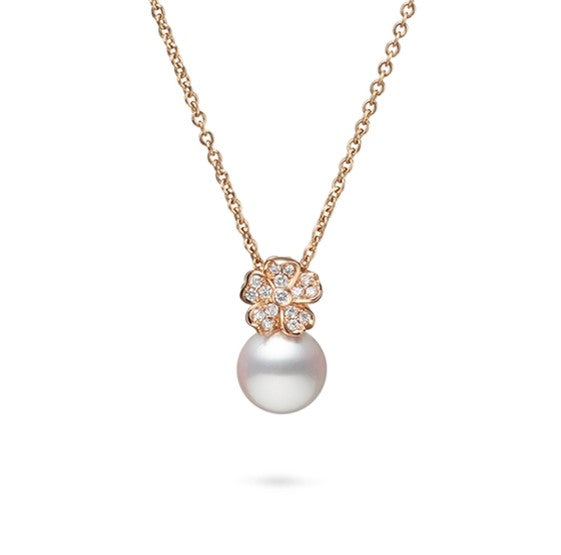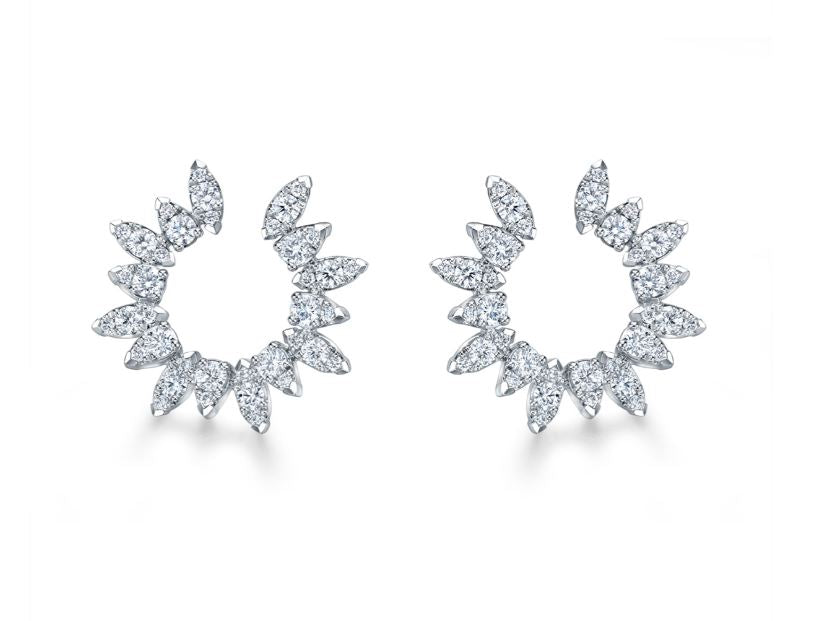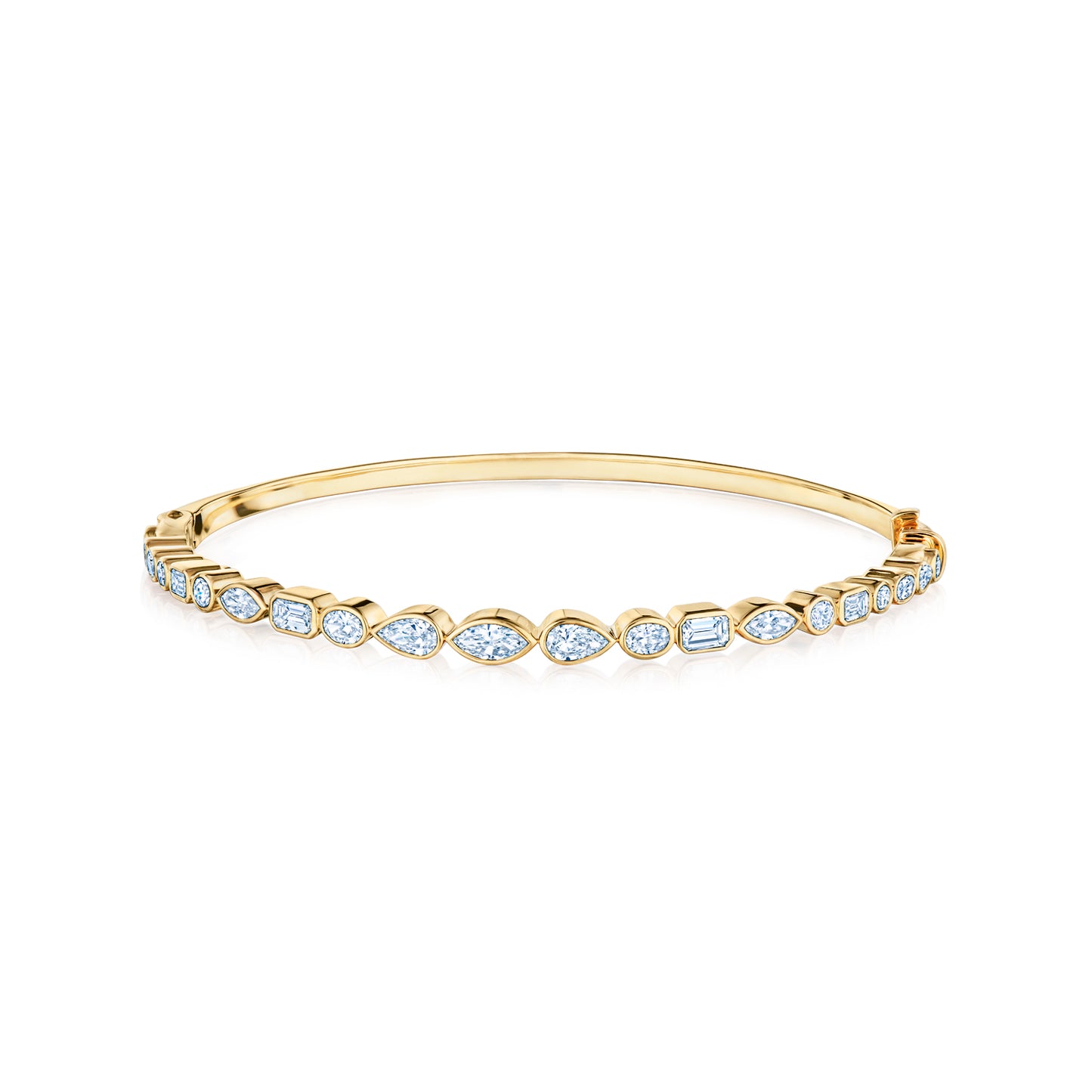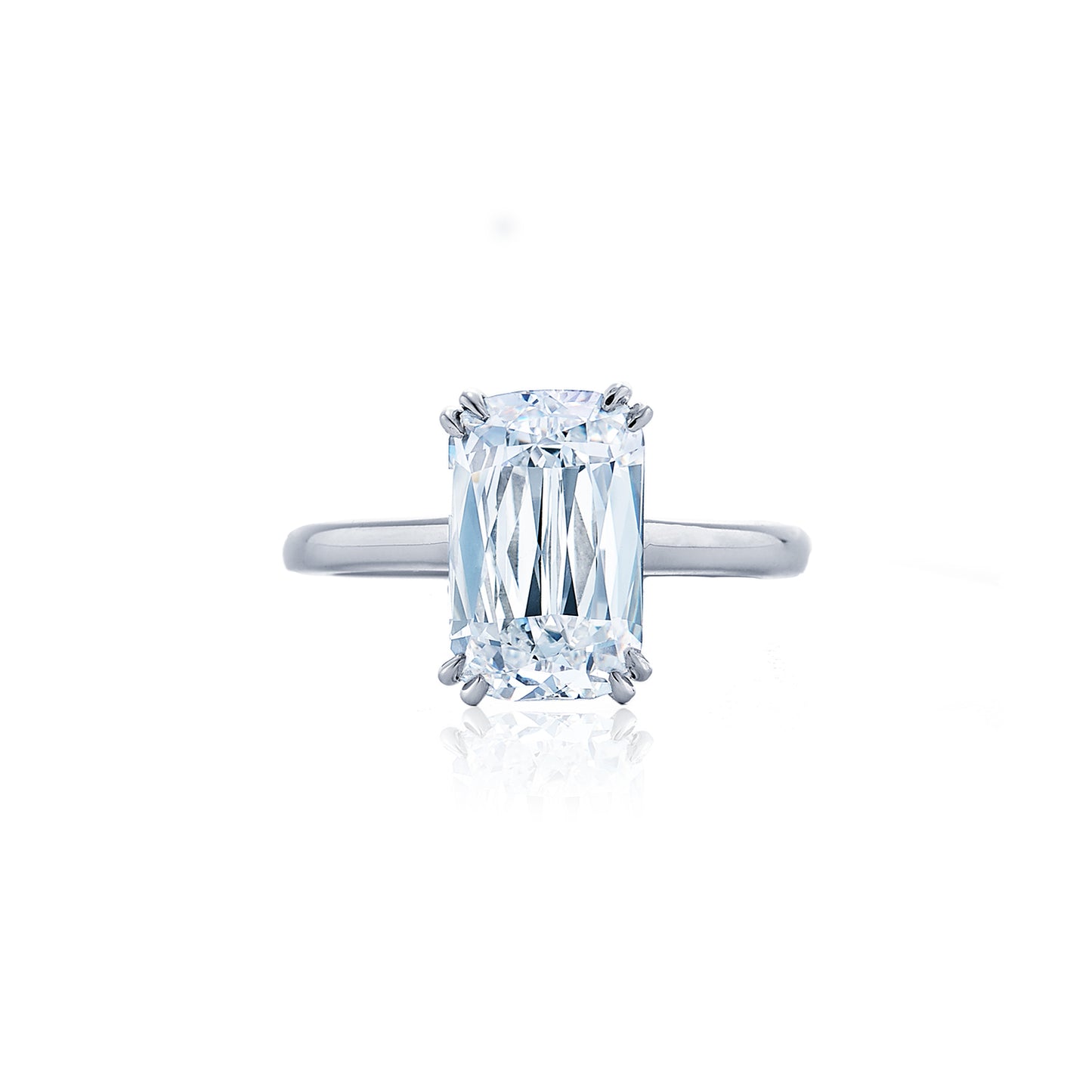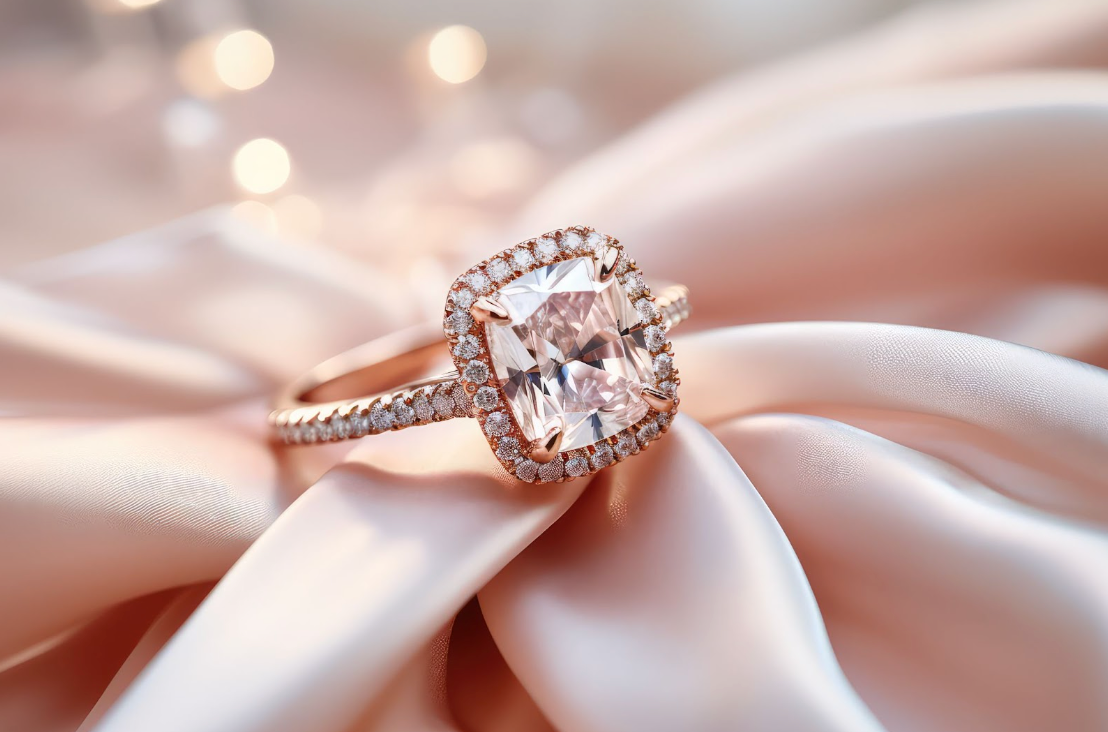
Which Cut is Right for Your Ring?
A diamond’s "cut" refers both to the shape of the gemstone and how well the diamond's facets interact with light. This interplay determines brilliance, fire and scintillation. A well-cut diamond will reflect light internally from one facet to another and then disperse it through the top of the stone, ensuring maximum sparkle and aesthetic appeal. The perfect cut is all about proportion, symmetry and polish, optimizing the diamond's inherent beauty and reflecting luminous white light and all seven colors of the rainbow.
Cut is one of the most important factors in selecting a diamond for your engagement ring. Here, we explore some of the most prominent diamond cuts and their characteristics. We hope you consider favors like level of brilliance and clarity, and ultimately follow your heart when choosing the diamond shape that speaks to you.
The History and Evolution of Diamond Cuts
Diamond cutting has evolved significantly since its inception in the 14th century. Early diamond cuts were rudimentary and focused on preserving as much of the rough diamond as possible. Over time, advancements in technology and a deeper understanding of light refraction have led to the development of sophisticated, precise cuts, each designed to maximize a diamond's optical properties and enhance appearance. Today, there are many cut options to choose from, each with its own unique characteristics.
Round Brilliant Cut
The round brilliant cut, developed in 1919 by Marcel Tolkowsky, is the most popular and scientifically studied diamond cut. It consists of 58 facets, meticulously calculated to enhance the diamond's brilliance and fire.
Round brilliant cut diamonds are relatively expensive due to their high demand and the significant loss of rough diamond during cutting, but this popular cut is known for its exceptional brilliance, and incredible versatility in various settings.
Princess Cut
Evolving from the historic French Cut, the princess cut rose to popularity in the 1980s. The princess cut is a square or rectangular shape with pointed corners and 58 to 76 facets. Its modern appeal, clean lines and sharp geometry make it a popular choice for engagement rings.
The princess cut stone can be prone to chipping at the corners, requiring a protective setting. It delivers brilliant sparkle, a contemporary aesthetic and is usually less expensive compared to round cuts.
Cushion Cut
The cushion cut, with origins dating back to the 18th century, combines a square shape with rounded corners, resembling a pillow. It has larger facets, enhancing its brilliance and giving it a vintage charm.
Though cushion cut diamonds may deliver less brilliance compared to round cuts, and the depth of the cut can make the diamond appear smaller, they hold a romantic and timeless appeal, good light performance and the cut hides inclusions well.
Oval Cut
The oval cut, created in the 1960s by Russian-born, New York-based diamond cutter Lazare Kaplan, is an elongated version of the round brilliant cut. It maintains excellent brilliance and creates the illusion of greater size.
One potential drawback is the bow-tie effect, where a shadow forms across the center and detracts from the stone’s sparkle. But the oval cut lends the stone a larger appearance, and its elegant shape is flattering for all hand shapes.
Emerald Cut
Emerald cuts have been popular since the Art Deco era of the 1920s. They are characterized by a rectangular shape with step-cut facets, emphasizing clarity and the diamond's natural beauty.
This cut creates less brilliance and fire than other cuts, and inclusions are more visible due to the large, open facets; however, the elegant and sophisticated look, highlights diamond clarity, and offers a unique optical appearance.
Ashoka Cut
The Ashoka cut, which takes its name from the legendary Indian Emperor Ashoka, was popularized in the early 20th century by storied diamond cutter William Goldberg. This unique cut is a modified cushion cut, featuring 62 facets and an elongated shape with rounded corners, designed to enhance the diamond's brilliance and fire. Its distinctive character lies in its ability to maximize light reflection, creating exceptional sparkle while maintaining a larger appearance.
The Ashoka cut offers a rare and luxurious appeal, excellent brilliance and the illusion of a larger carat size. If you’re looking for the rare Ashoka cut for your engagement ring, your search is over—we are proud to offer the Kwiat Ashoka cut at Thomas Markle Jewelers.
Radiant Cut
Developed in the 1970s by Henry Grossbard, a native of Austria and a master diamond cutter, the radiant cut combines the elegance of the emerald cut with the brilliance of the round cut. It features a rectangular or square shape with trimmed corners and a brilliant-cut facet pattern.
The depth of the cut can reduce the perceived size, and it can be more expensive due to its complex cutting process. But the radiant cut evokes Hollywood glamor, with excellent brilliance, versatile shape and well-hidden inclusions.
Asscher Cut
The Asscher cut was developed in 1902 by the Asscher Brothers of Holland and became popular during the Art Deco era. It features a square shape with a high crown and large step-cut facets, creating a hall-of-mirrors effect.
While it may produce less brilliance than other cuts, the Asscher cut prioritizes clarity, and offers a unique vintage appeal and sophisticated look.
Marquise Cut
Commissioned by King Louis XV of France in the 18th century, the marquise cut is an elongated shape with pointed ends, designed to resemble the lips of his mistress, the Marquise de Pompadour.
While the Marquise cut may be prone to chipping at the ends, it maximizes carat weight, creating a larger appearance. The delicate shape has a flattering effect on the finger.
Pear Cut
The pear cut, or teardrop shape, dates back to the 1400s and was invented by Flemish diamond polisher Lodewyk van Bercken. It combines the best of the round and marquise cuts, with a single point and a rounded end.
The pear cut may be susceptible to chipping at the point, and requires a well-balanced cut to avoid a pronounced bow-tie effect. Its unique, elegant shape elongates the fingers, and produces excellent brilliance.
Find the Perfect Cut at Thomas Markle Jewelers
The cut of a diamond significantly impacts its beauty, value and overall appearance. Understanding the unique characteristics of each diamond cut can help you make an informed decision when selecting the perfect diamond for your engagement ring. Whether you prefer the timeless brilliance of a round cut or the vintage charm of an Asscher cut, each cut offers a distinct appeal that can reflect your personal style and preference. To see these beautiful cuts for yourself, visit us at Thomas Markle Jewelers.
Related Article: Hearts on Fire - Patented Cut



